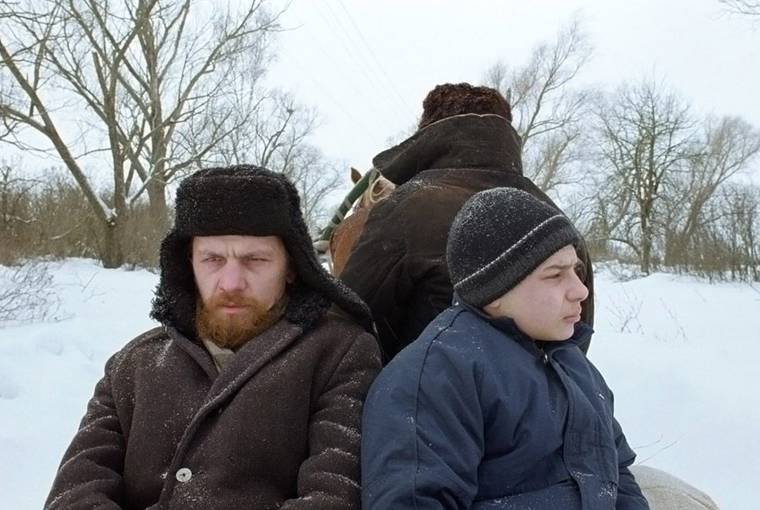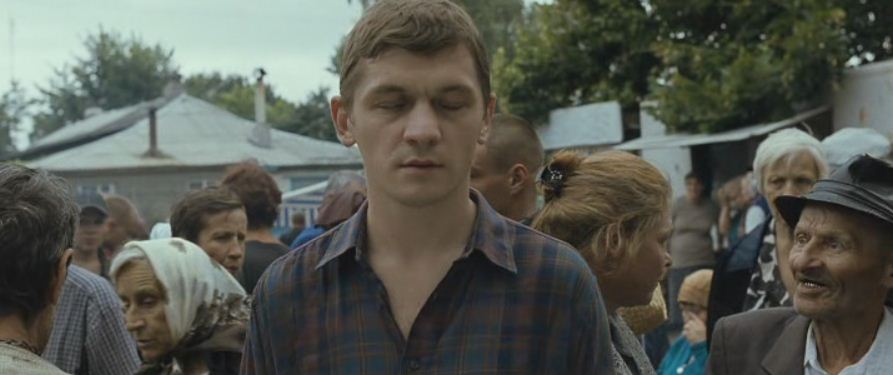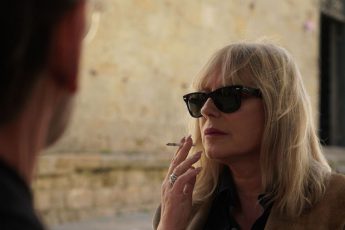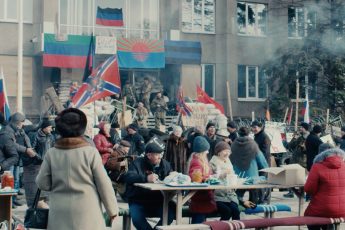Holy Indifference
Sergei Loznitsa’s My Joy (Schastye moe, 2010)
Vol. 6 (June 2011) by Moritz Pfeifer
In Sergei Loznitsa’s My Joy, a candid truck driver goes berserk and kills five people. Georgy (Victor Nemets), the driver, is on the road to deliver flour. His journey begins peacefully but is soon interrupted by increasingly violent episodes. He is stopped by corrupt policemen, picks up a prostitute that won’t accept money for nothing, and looses his truck and goods to a trio of amateur robbers. Before long, we see him with a beard, his clean shirt and trousers turned into rags, trying to survive in an abandoned village cursed by eternal winter. It is clear that Georgy lost the path of good will. His face and expression already resemble that of the vagrant thieves. Sooner or later he will become part of the people that put him in this desolate position.
My Joy is a film about disillusionment, the impossibility to do good in a bad society. From Candide to Notes from the Underground, the farewell to good will is an old story. Once Georgy is abandoned by his good spirits, his pay off is only a matter of time and the shooting in the end does not really surprise. So plot-wise, Loznitsa’s film might not offer unusually bewildering insight. The characters that ruin Georgy are 100% evil – bad cops, mafia, vagabonds –, at times My Joy appears stereotypical. But it is not so much the plot or the characters as the images, that make this film unique.
Loznitsa knows how to use the screen. As Goergy is stopped by the police, a woman who also had to halt can be seen through the window in front of the truck. The police officer dealing with the woman stares at her rear as she bends over to open the trunk and shares the fun with his colleague who is occupied with Georgy. This shot simultaneously captures three different points of views: that of the driver, who realizes the sadistic traits of the officers, and that of the two police officers who seem to make people stop only to harass and degrade them. Instead of first filming the policemen with the woman, and then cutting to the other policeman at the truck, Loznitza decided to tell the three narratives in one shot. Loznitza constructs his shots like paintings, where more than one narrative is told at once.
 Georgy at the market
Georgy at the market
In another scene, Georgy wants to buy some food at the market. The camera pans through a crowd, the cuts are rapid, and as Georgy slowly walks between the masses, mocking grimaces flash by. Their looks are infernal and their faces deformed. They give the impression as if they came straight out of the crowd in the Bosch painting, Christ Carrying the Cross. It is true that Georgy is a saint-like figure. He perfectly represents what early Rennaissance theologians such as St. Francis de Sales called “holy indifference,” a state of being that accepts suffering and suspends personal will. Georgy doesn’t act, punish or fight back. In the market scene, he is knocked over by a running man but doesn’t defend himself. Georgy sways through the crowd as if it didn’t concern him. He accepts the evils of the world. This scene visually narrates the forceful abnegation of an apathetic soul.
Christ Carrying the Cross by Hieronymus Bosch
Of course, in Loznitza’s vision, impassivity cannot endure. The shooting at the end of the film interrupts the taming of Georgy’s passions. It is a call for action, the breaking free of a violent impulse held back for too long. So yes, he finally reacts, but it would be wrong to say that the shooting is really Georgy’s deed, or that the deed could stand for a belayed affirmation of his personal will. As Goergy walks into the dark, it becomes clear that he is nothing more than a specter.





Leave a Comment